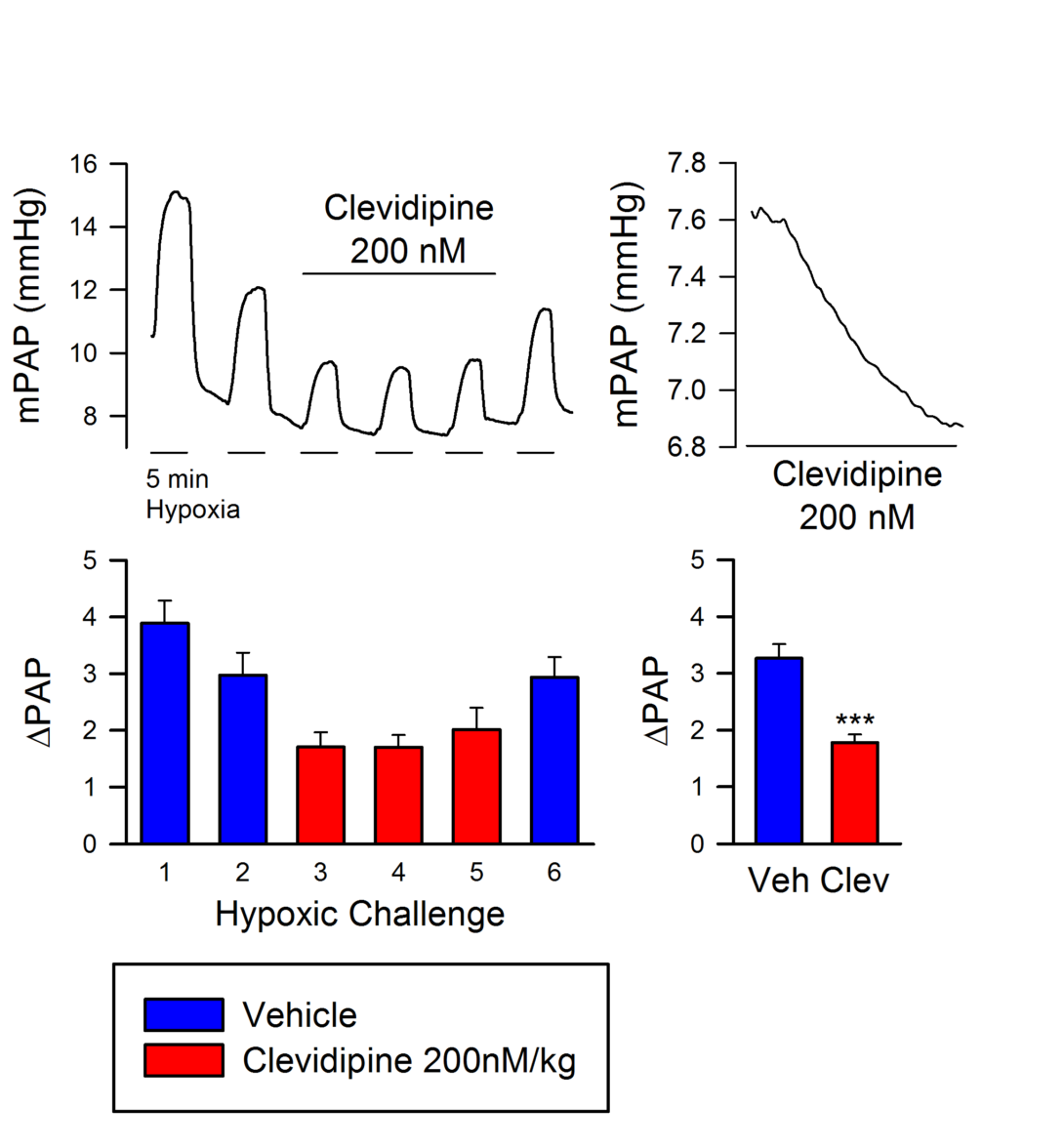Dustin Fraidenburg, MD LAB
Vascular Function and Mechanisms of Pulmonary Vascular Disease and Pulmonary Hypertensio Heading link

Abstracts Accepted to 2022 American Thoracic Society International Conference in San Francisco, CA.
In May 2022, Dr. Fraidenburg discusses Chronic Thromboembolic Pulmonary Hypertension at Asembia Specialty Pharmacy Summit 2022 in Las Vegas, NV.
March 2022: Two Poster Presentations at Midwest Clinical and Translational Research Meeting, Congrats to Janae Gonzales and Cat Humpal on presentations and travel awards!
NIH K08: Role of NFATc3 in Altered Hypoxic Pulmonary Vasoconstriction during Acute Lung Injury now in its 5th year
The Fraidenburg Lab focuses on mechanisms of altered pulmonary vascular function as well as the pathobiology of pulmonary vascular disease and pulmonary hypertension. A complex disease of the pulmonary vascular system, pulmonary hypertension (PH) is found to exist as both an isolated disease of small pulmonary arteries and as a complication of numerous chronic diseases. Dr. Fraidenburg has spent his training and academic career determined to better understand this disease process in order to bring new potential therapies to these patients. Pulmonary hypertension is characterized by sustained vasoconstriction and vascular remodeling of the small pulmonary arteries and arterioles. The lab seeks to better understand both of these mechanisms and has built projects around each.
Hypoxic pulmonary vasoconstriction is an evolutionary mechanism that is important to fetal development as well as a defense mechanism during times of lung injury. The lab is currently exploring the role of NFATc3, an immune regulator, in pulmonary artery smooth muscle cell contraction and hypoxic vasoconstriction both in vitro and in vivo. NFATc3 appears to have a regulatory role in the function and/or transcription of calcium ion channels that contribute to pulmonary artery smooth muscle cell contraction. The lab uses isolated-perfused mouse lung to examine the effects of various stimuli on pulmonary artery contraction (figure above) as well as in vitro techniques of cell culture and transfection, Western blotting, real-time PCR, and cell imaging to elucidate these mechanisms.
The lab is also interested in mechanisms of endothelial dysfunction as one of the first pathobiologic steps in the development of PH. Current projects are focused on structural changes to the pulmonary artery endothelial cell cytoskeleton that may lead to phenotypic changes characteristic to the development of PH. The role of cytoskeletal proteins such as MLCK as well as endothelial to mesenchymal transition are being explored using in vitro models of various types of PH, including hereditary pulmonary arterial hypertension and chronic hemolytic anemia-associated pulmonary hypertension.
Selected Key Publications Heading link
- Fraidenburg, D.R. and J.X.-J. Yuan. Hungry for more – Autophagy in the pathogenesis of PAH. Circ Res. Apr 12; 112(8): 1091-1093, 2013.
- Tang, H., A. Yamamura, H. Yamamura, S. Song, R. Fraidenburg, J. Chen, Y. Gu, N. Pohl, T. Zhou, L. Perez, R. Ayon, A. Desai, D. Goltzman, F. Rischard, Z. Khalpey, S. Black, J.G.N. Garcia, A. Makino, and J.X.-J. Yuan. Pathogenic role of calcium-sensing receptors in the development and progression of pulmonary hypertension. Am J Physiol Lung Cell Mol Physiol. May 1; 310 (9): 846-59, 2016.
- Fraidenburg, D.R. and R.F. Machado. A review of transcriptome analysis in pulmonary vascular diseases. Methods Mol Biol. 2018; 1783:259-277.
- Fraidenburg, D.R., A.A. Desai, and J.X.-J. Yuan. Treatment of pulmonary arterial hypertension. In: “Goodman and Gilman’s The Pharmacological Basis of Therapeutics,” edited by L. Brunton, McGraw-Hill; New York, NY; 2017. (Book Chapter)
- Fraidenburg, D.R. and J.X.-J. Yuan. Pulmonary hypertension. In: “Encyclopedia of Cardiovascular Research and Medicine,” edited by V. Ramachandran and D. Sawyer, Elsevier, Amsterdam; 2017. (Book Chapter)
Research Heading link
Role of NFATc3 in Altered Hypoxic Pulmonary Vasoconstriction during Acute Lung Injury
Lung inflammation and hypoxemia are major risk factors for mortality in acute respiratory distress syndrome (ARDS). Adequate blood oxygenation is dependent on effective matching of ventilation and perfusion in the lung microenvironment and, as an evolutionary mechanism, hypoxic pulmonary vasoconstriction is aimed at maintaining sufficient blood supply to the most effectively ventilated areas of the lung. The purpose of this proposal is to determine the mechanisms by which NFATc3 leads to impaired HPV during acute lung inflammation and injury
The Role of MLCK activation on Endothelial Dysfunction in the Development of Pulmonary Hypertension
Pulmonary arterial hypertension (PAH) is a severe and progressive disease characterized by narrowing and obstruction of small pulmonary arteries leading to increased pulmonary vascular resistance and right heart failure. There are many mechanisms involved in the development of PAH and it is clear that endothelial dysfunction is an early finding. We have focused on endothelial dysfunction and structural changes to the endothelium which can contribute to the pathogenesis of pulmonary hypertension. The current project examines the effects of non-muscle MLCK activation on cellular proliferation, migration and apoptosis in human pulmonary artery endothelial cells.
Mechanisms of Vascular Dysfunction in Chronic Hemolytic Anemia
Pulmonary hypertension is a severe sequela of sickle cell disease (SCD) encountered in about 10% of patients and is an independent predictor of mortality. Hemolysis and nitric oxide scavenging are thought to play an important role in endothelial dysfunction and vascular remodeling leading to PH in SCD patients. Still, the precise pathogenesis leading to such a high burden of PH remains incompletely understood. We hypothesize that the products of intravascular hemolysis lead to inflammation, increased endothelial proliferation, and endothelial to mesenchymal transition (EndoMT) which ultimately contribute to the development and progression of pulmonary hypertension in patients with sickle cell disease and other chronic hemolytic anemias.
Collaborators Heading link
Lab Members
Janae Gonzales, MD
Cat Humpal, BS
Kareem Alzein, BS candidate
Naomi Rajesh, BS candidate
Former Trainees
Mariam Anis, MD
Kelsey Holbert, BS
Rachel Halstrom, BS
Noman Baig, BS
Kamryn Czysz, BS
Collaborators
Steven Dudek, MD
Jeff Jacobson, MD
Patrick Belvitch, MD
Jason X-J Yuan, MD, PhD
Roberto Machado, MD
Jiwang Chen, PhD
